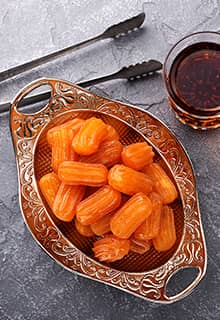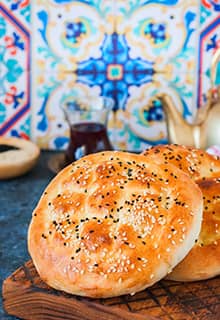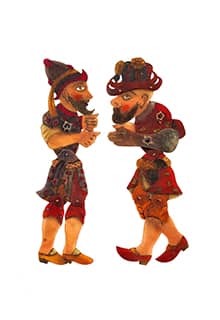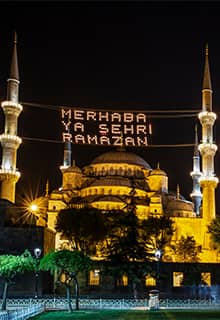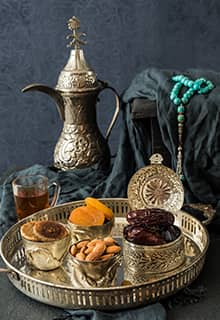

Ramadan and Ramadan Feasts
in Türkiye
Ramadan is celebrated as a month of faith and cultural effervescence. A festive atmosphere can be felt throughout the month with temporary booths selling religious books and paraphernalia.
The fasting period from sunset to sunrise still regulates most people’s schedules during the holy month as nights are more animated than usual. People are more likely to attend the five daily prayers at their local mosque as well as the evening Tarawih.
In the middle of the night, drummers circulate through the towns and villages to wake the faithful up to prepare sahur, the large, early-morning meal to be eaten before the fast begins again at sunrise.
The Bayram, the Turkish version of Eid al-Fitr which marks the end of the fast, is a four-day national holiday. Many people wake up early on the first day of the Ramadan Feast and they put on their best clothes, called bayramlık, which they often buy specifically for the occasion, and have a large breakfast. This symbolizes the end of the fasting period. It is customary to visit one's relatives, especially the elder ones, and kiss their hand as a sign of respect. Children may go door-to-door, kissing the hands of grown-ups and receiving sweets, and/or small amounts of pocket money in return.
Ramadan Traditions in Türkiye
Ramazan Davulcusu: The Ramadan drummers are among the traditions that have survived from the past to this day. Ramadan drummers play their drums and inform locals of sahur.
Cannon Salutes to Announce Iftar: The tradition of firing cannons to announce iftar dates back to the Ottoman period, and specifically the 1800s, and is still active in some cities and villages.
Karagöz and Hacivat: Karagöz and Hacivat are the lead characters of traditional Turkish shadow theater. Shadow theater was popularized during the Ottomanperiod, and in the month of Ramadan, many performances of Karagöz plays are staged.
Mahya (Roof Ridge): During Ramadan, mosques are illuminated with roof ridges containing Ramadan messages.
Ramadan Dining: During the holy month of Ramadan, many high-end restaurants and luxury hotels in Türkiye offer rich iftar menus featuring the finest selections of Turkish, Ottoman, and international cuisines. Breaking fast at an impressive traditional iftar table enriched with appetizers, main courses, and exclusive desserts turns iftar into a feast, with the company of live music in an elegant atmosphere.
Ramazan Pidesi: Generally, Ramazan pidesi can only be found in bakeries during the holy month of fasting. Near sunset, queues form outside of bakeries for this freshly baked, warm round bread sprinkled with sesame seeds. It comes straight out of the oven in preparation for iftar
Güllaç: Güllaç is a traditional Ramadan dessert made of thin rice starch sheets layered with crunchy walnuts (sometimes hazelnuts or pistachios are used), soaked in a milky syrup, and flavored with rose water. This unique dessert, inherited from the Ottoman cuisine, takes its name from the rose water that is used in its preparation.
Osmanlı Şerbeti: Osmanlı şerbeti (Ottoman sherbet) is a traditional Ramadan drink with a history of more than 600 years. It is made using a wide variety of fruits and spices such as cinnamon, tamarind, hibiscus, ginger, rose, licorice, cranberry, pomegranate, quince, lavender, etc. and is sweetened with honey or sugar. This refreshing drink continues to be a staple of modern Ramadan menus.
Hurma: Dates are a significant part of Islamic tradition, and are usually used to break the fast during the month of Ramadan.

